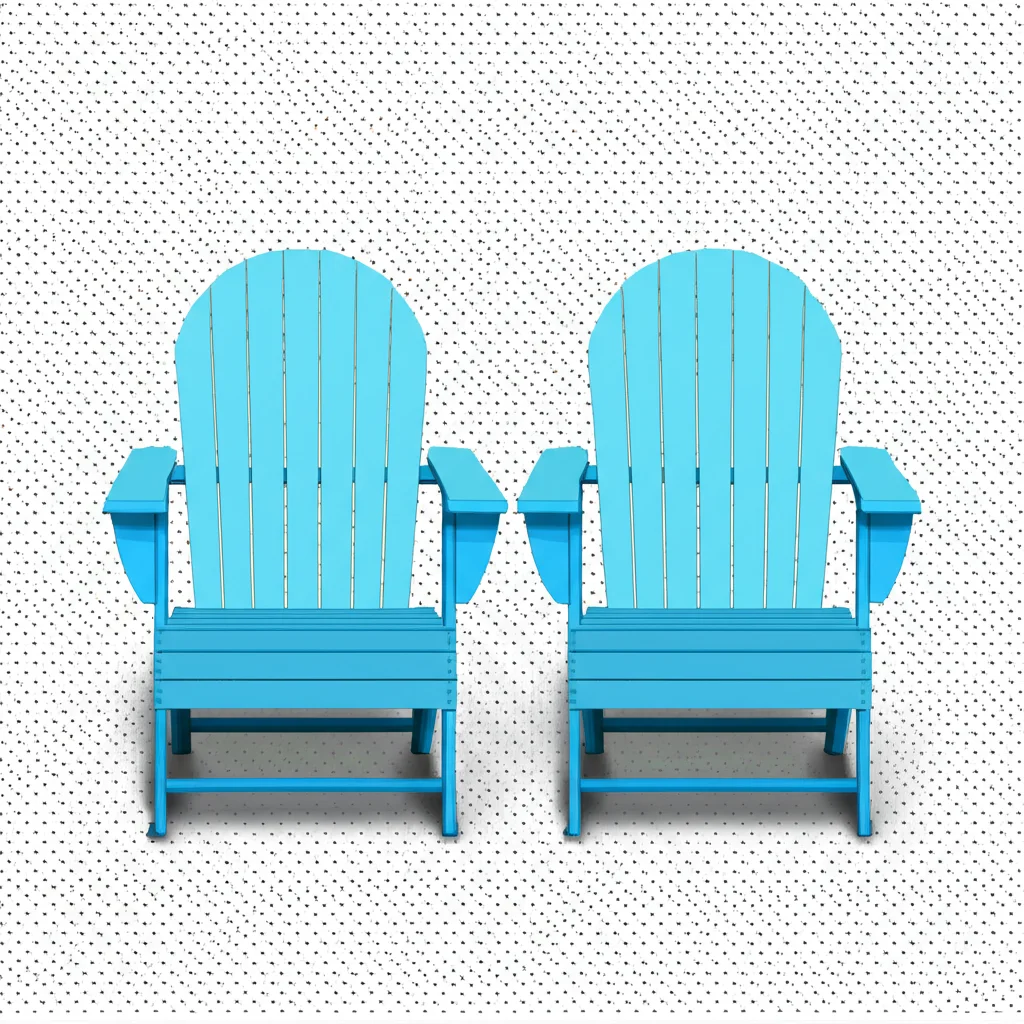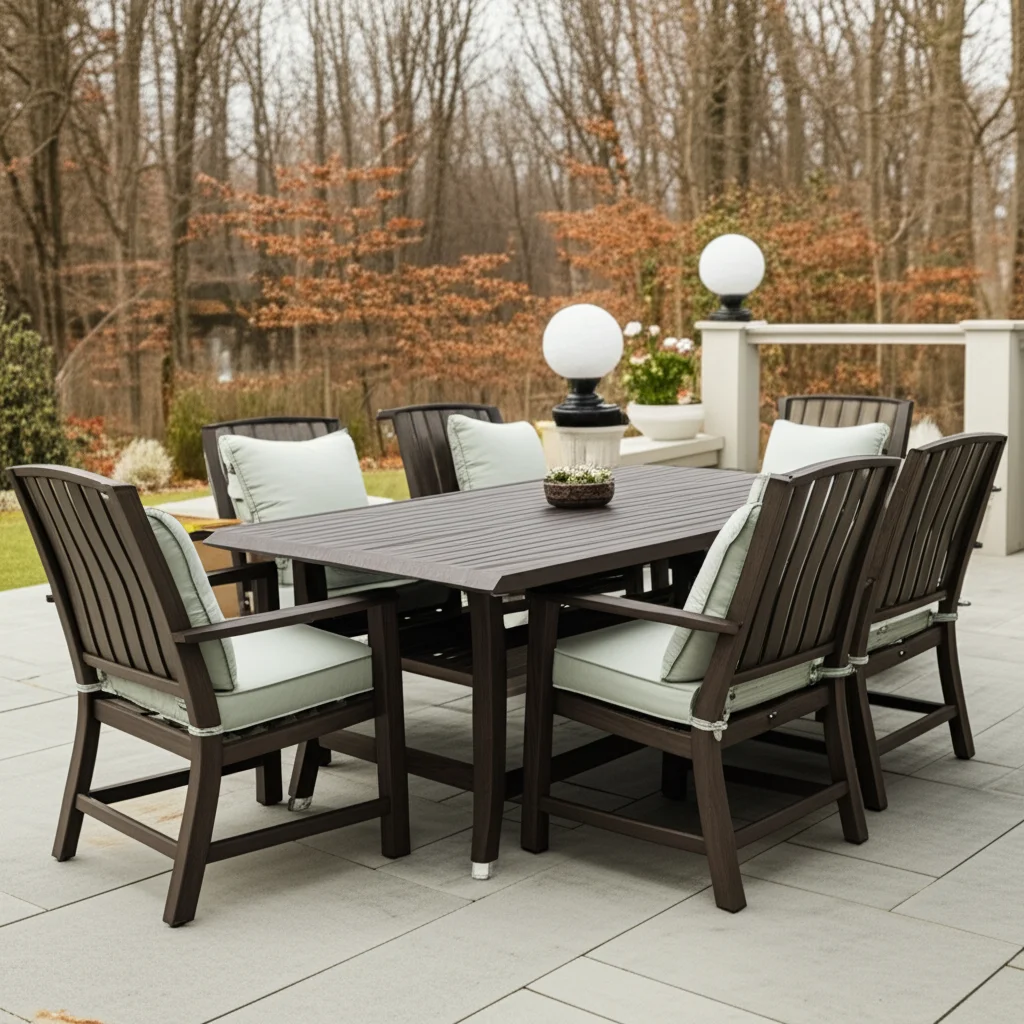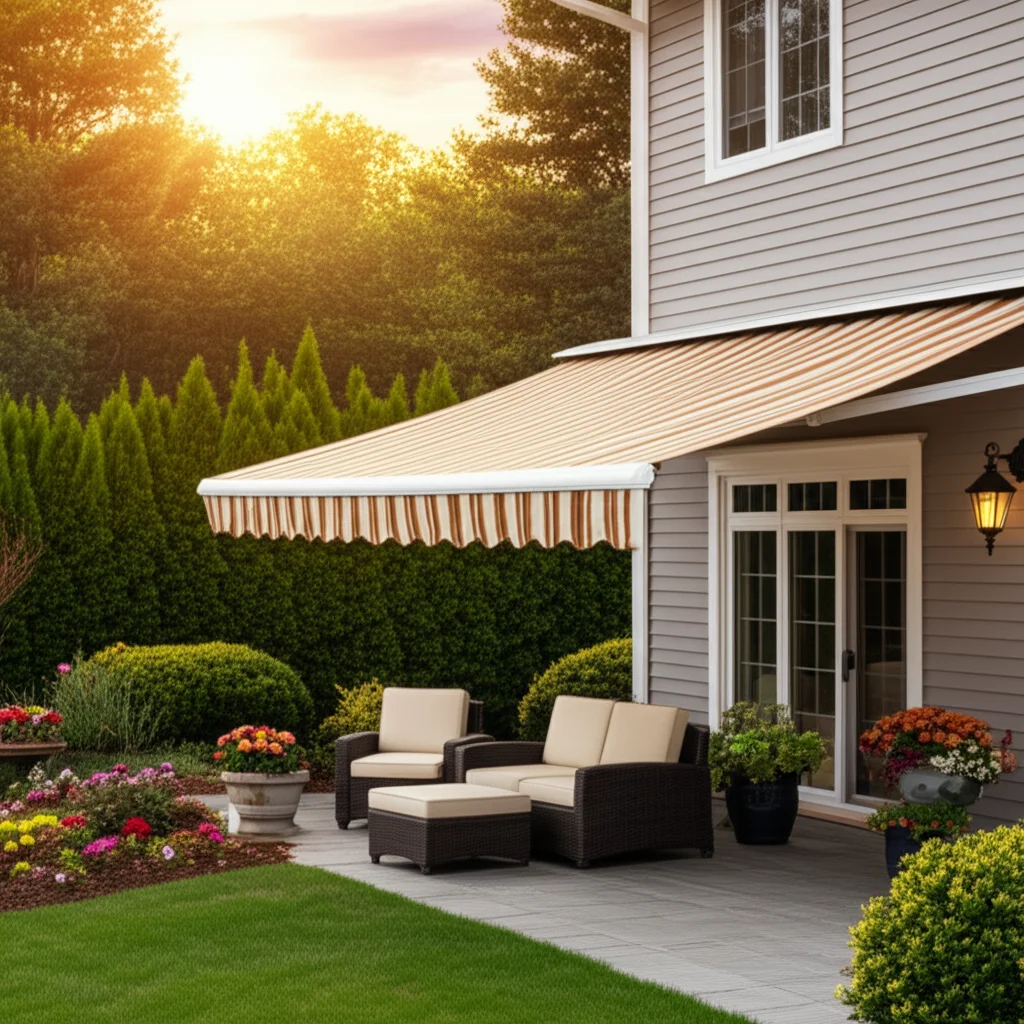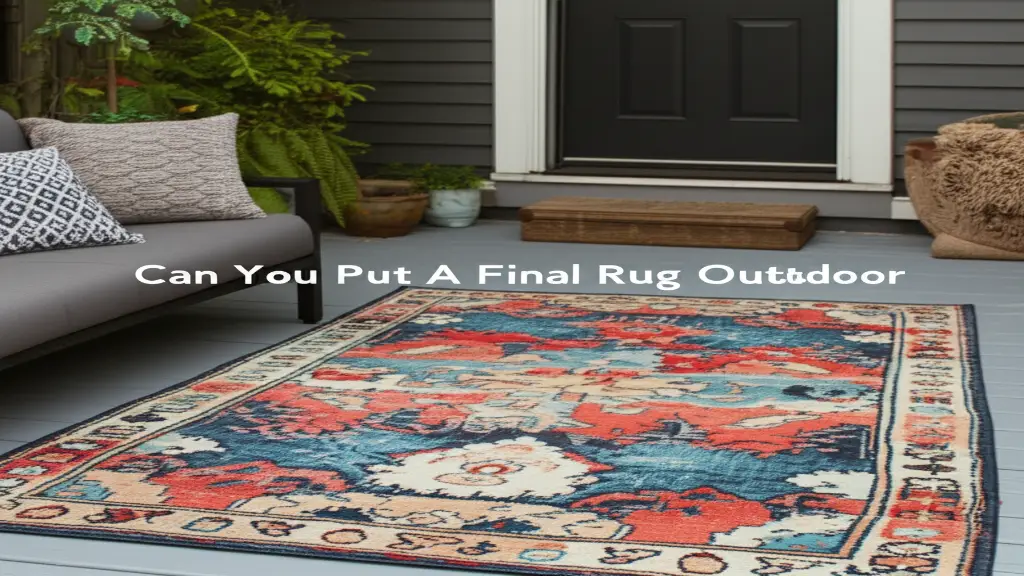· Todd Martin · Outdoor Living · 18 min read
How To Clean Plastic Patio Furniture

Rejuvenate Your Plastic Patio Furniture
Plastic patio furniture is a common sight in many backyards. It offers a lightweight, affordable, and durable option for outdoor seating. We love it for its practicality, but over time, exposure to sun, rain, and dirt can make it look dull and dirty. I know the feeling of looking at my once-bright chairs now covered in grime.
This guide helps you learn how to clean plastic patio furniture effectively. We will explore different methods, from basic washing to tackling stubborn stains and mildew. We also cover steps to restore its original luster. You will discover practical tips to keep your outdoor plastic furniture looking fresh and inviting for years. Let us bring that sparkle back to your patio.
Takeaway
- Regularly wipe down plastic patio furniture with soap and water to prevent dirt buildup.
- Use a vinegar solution or baking soda paste for deep cleaning and mild grime.
- Apply a diluted bleach solution or hydrogen peroxide to safely remove mold and mildew.
- Target specific stains like dirt, food, or rust with appropriate cleaning agents.
- Restore faded furniture using oxygen bleach or automotive plastic restorer.
- Protect your plastic furniture with UV sprays and proper storage to ensure longevity.
To clean plastic patio furniture, first rinse it to remove loose dirt. Then, use a soft brush and a solution of warm water and dish soap to scrub away grime. For stubborn stains or mildew, apply a vinegar or bleach-based cleaner. Rinse thoroughly with clean water and let it air dry.
The Essentials of Cleaning Plastic Patio Furniture
Keeping plastic patio furniture clean is simple with the right approach. Regular cleaning prevents dirt and grime from building up. This saves you from tougher jobs later. I find that a quick clean every few weeks makes a big difference. This section details the basic supplies you need and the easiest ways to start cleaning your plastic furniture.
Plastic furniture is durable, but it still collects dirt, pollen, and environmental debris. Neglecting it leads to dullness and discoloration. Sunlight can cause the plastic to become brittle or fade over time. Rain washes some dirt away, but it often leaves behind water spots and mineral deposits. Dust and spiderwebs also cling to surfaces, making furniture look neglected. This basic cleaning routine helps maintain its appearance and extends its life. It is the first step in comprehensive patio furniture care.
Gather Your Cleaning Essentials
Before you start scrubbing, gather everything you need. Having all your supplies ready makes the job much smoother. You likely have most of these items around your house already. I always keep a dedicated bucket and brushes for outdoor cleaning tasks.
Here is a list of basic supplies:
- Mild Dish Soap: This is gentle yet effective for general dirt.
- Warm Water: It helps dissolve dirt and soap better.
- Soft-Bristle Brush or Sponge: Avoid abrasive scrubbers that can scratch the plastic.
- Hose or Bucket for Rinsing: To thoroughly wash off the cleaning solution.
- Clean Cloths or Towels: For drying and wiping.
Optional items include a spray bottle for pre-mixing solutions. A pair of gloves can protect your hands from harsh solutions, although dish soap is generally safe. For a deeper clean, consider a larger scrub brush with a handle. This helps you reach all areas easily.
The Simple Regular Wipe-Down
Daily or weekly wipe-downs are essential for proactive cleaning. They stop dirt from embedding into the plastic. This quick routine takes little time but yields big results. I often do this while watering my plants.
Here is how to perform a simple wipe-down:
- Rinse: Use a garden hose to spray down the furniture. This removes loose dirt and dust.
- Mix Solution: Fill a bucket with warm water. Add a few drops of mild dish soap. Stir until suds form.
- Wipe: Dip your soft-bristle brush or sponge into the soapy water. Gently wipe down all surfaces of the plastic furniture. Pay attention to armrests and seat areas.
- Rinse Again: Thoroughly rinse the furniture with clean water from the hose. Make sure no soap residue remains. Soap residue can attract more dirt over time.
- Dry: Let the furniture air dry in the sun. Or, wipe it down with a clean, dry cloth to prevent water spots.
This routine is perfect for maintaining the cleanliness of your outdoor space. It is a good starting point for learning how to clean outdoor furniture of any material, as the principle of regular maintenance applies across the board.
Deep Cleaning Methods for Stubborn Grime
Sometimes, a simple wipe-down is not enough. Stubborn grime, dried-on dirt, and environmental pollutants can cling to plastic furniture. These require a more intensive cleaning approach. I often find this necessary at the start of spring after the furniture has been exposed to winter weather. This section explores stronger, yet safe, cleaning solutions to tackle those tougher cleaning challenges. These methods get your plastic patio furniture looking new again.
Plastic surfaces, especially those with textures, can trap dirt deep within their pores. Over time, this buildup creates a dingy appearance. Regular use also contributes to grime, especially in high-touch areas. The goal of deep cleaning is to lift this embedded dirt without damaging the plastic. We focus on effective, readily available household products.
Dish Soap and Water: The Go-To Solution
Even for deeper cleans, a strong dish soap solution is often enough. It cuts through grease and dirt effectively. This method is safe for most plastic types and easily accessible. I always start with this method before trying anything stronger.
Follow these steps for a deep clean with dish soap:
- Pre-Rinse: Spray down the furniture with a hose. This removes loose debris and pre-wets the surface.
- Prepare Strong Solution: In a bucket, mix about 1/4 cup of mild dish soap with a gallon of warm water. Use a higher concentration of soap for very dirty items.
- Apply and Scrub: Dip a soft-bristle brush into the solution. Scrub all surfaces of the furniture thoroughly. For textured areas, use a circular motion to lift dirt. Pay special attention to crevices and corners where grime accumulates.
- Let Sit (Optional): For very stubborn dirt, let the soapy solution sit on the furniture for 5-10 minutes. This gives the soap time to break down the grime.
- Rinse Completely: Use a powerful spray from your hose to rinse off all the soap and dirt. Ensure no suds remain.
- Air Dry: Allow the furniture to dry completely in the sun.
This method works wonders for general dirt, pollen, and everyday grime that has built up over weeks or months.
Vinegar Power: Natural Cleaning Alternative
White vinegar is a fantastic natural cleaner. It is acidic, which helps break down dirt, mildew, and hard water spots. Plus, it is environmentally friendly and safe for most plastics. I often turn to vinegar when I want a non-toxic option.
Here is how to clean with vinegar:
- Mix Solution: Combine equal parts white vinegar and warm water in a spray bottle or bucket. For example, 1 cup of vinegar to 1 cup of water.
- Apply Liberally: Spray the entire surface of your plastic furniture with the vinegar solution. Alternatively, apply it with a sponge.
- Let It Work: Allow the solution to sit on the furniture for about 15-20 minutes. This gives the vinegar time to dissolve grime and neutralize odors.
- Scrub Gently: Use a soft brush to scrub the furniture. You may see dirt lift away easily.
- Rinse Thoroughly: Rinse the furniture completely with clean water from your hose.
- Dry: Let the furniture air dry. The vinegar smell will dissipate as it dries.
Vinegar is particularly good for light mildew spots and general dullness. It often brightens the plastic slightly.
Baking Soda Paste for Extra Scrubbing
Baking soda is a mild abrasive that can gently scrub away tough dirt without scratching the plastic. It also helps to deodorize. I use this method for particularly grimy spots that need a bit more mechanical cleaning action.
Steps for using baking soda paste:
- Make a Paste: In a small bowl, mix baking soda with a little warm water. Add water slowly until you form a thick paste. It should be spreadable but not too watery.
- Apply to Grime: Apply the paste directly to heavily soiled areas or stubborn spots on the plastic furniture.
- Scrub Gently: Using a damp sponge or soft brush, gently scrub the paste into the dirty areas. The fine particles of baking soda will lift the grime.
- Allow to Sit (Optional): For very tough spots, let the paste sit for 10-15 minutes before scrubbing.
- Rinse Well: Rinse the furniture thoroughly with clean water. Ensure all baking soda residue is removed.
- Dry: Allow the furniture to air dry.
This method is excellent for lifting embedded dirt and light stains that regular dish soap might miss. Baking soda is a great partner for cleaning plastic sinks as well, showing its versatility.
Tackling Mold and Mildew on Plastic Furniture
Mold and mildew are common problems for outdoor plastic furniture, especially in humid or shady environments. They appear as black, green, or white fuzzy patches. Not only do they look unsightly, but they can also cause a musty smell and potentially damage the plastic over time if left untreated. I have dealt with this on my own patio furniture many times. This section offers specific solutions to effectively remove mold and mildew, restoring the cleanliness and safety of your plastic chairs and tables.
Mold thrives in damp, dark conditions. Plastic furniture, especially when stored uncovered or in areas with poor air circulation, provides an ideal breeding ground. Spores settle on the surface and grow, creating those unpleasant patches. Prompt removal is important to stop them from spreading and to protect the plastic. Using the right cleaner ensures the mold is killed, not just smeared around.
Bleach Solution for Tough Mold
Chlorine bleach is a powerful disinfectant and mold killer. It works well on white or light-colored plastic furniture. You must use it with caution, as it can be strong. Always wear gloves and eye protection. Make sure you are in a well-ventilated area when using bleach.
Here are the steps for using bleach:
- Prepare Area: Move the furniture to a spot where the runoff will not harm plants or other surfaces.
- Mix Solution: In a bucket, combine 1 part household bleach with 10 parts water. For example, 1 cup of bleach to 10 cups of water.
- Apply with Care: Dip a soft-bristle brush or sponge into the bleach solution. Apply it directly to the moldy areas. Avoid splashing.
- Let It Sit: Allow the solution to sit on the mold for about 10-15 minutes. This gives the bleach time to kill the mold spores and lighten stains. Do not let it dry on the furniture.
- Scrub Gently: Scrub the affected areas to remove the mold and any lingering stains.
- Rinse Thoroughly: Rinse the entire piece of furniture extensively with clean water from a hose. Ensure all bleach residue is gone. This is a critical step.
- Air Dry: Let the furniture air dry in the sun.
Remember, bleach can cause discoloration on colored plastic. Test it on an inconspicuous spot first if your furniture is not white. This method is very effective for removing mold off plastic surfaces.
Non-Bleach Alternatives for Mold Removal
If you prefer not to use bleach, or if your furniture is colored, several effective non-bleach options exist. These alternatives are safer for colored plastics and the environment. I often use these when I am concerned about my nearby plants.
Consider these alternatives:
- White Vinegar: As mentioned earlier, full-strength white vinegar can kill about 82% of mold species. Spray undiluted white vinegar directly onto the mold. Let it sit for an hour. Then, scrub with a soft brush and rinse thoroughly. This is effective for minor mold issues.
- Hydrogen Peroxide: A 3% hydrogen peroxide solution is another great non-toxic option. Pour it into a spray bottle. Spray directly onto the moldy areas. Let it sit for 10-15 minutes. Scrub with a brush and rinse well. Hydrogen peroxide is also safe for most colored plastics.
- Borax Solution: Mix 1 cup of borax with 1 gallon of hot water. Stir until dissolved. Apply the solution to the moldy areas with a brush or sponge. Scrub well. For severe mold, you can leave the solution on the surface without rinsing, as borax inhibits mold growth. If you choose to leave it, ensure children or pets will not come into contact with it. Otherwise, rinse thoroughly.
No matter which method you choose, always ensure good ventilation. Wear protective gear, especially for your hands. Proper rinsing is always key to prevent any residue.
Removing Common Stains from Plastic Patio Furniture
Plastic patio furniture can face a variety of stains. These stains range from everyday dirt to stubborn marks from food spills or even rust. Each type of stain may require a slightly different approach. I have found that identifying the stain type helps choose the most effective cleaning method. This section provides targeted solutions for various common stains, helping you restore your plastic furniture’s pristine appearance.
Stains on plastic can be tricky because plastic is porous. Dirt and pigments can get trapped in the surface. This makes them harder to remove than simply wiping them away. Understanding the nature of the stain guides you to the right cleaning agent. This prevents unnecessary scrubbing or damage to the plastic.
Targeting Dirt and Grime Stains
Everyday dirt, pollen, and general grime are the most common culprits. They tend to accumulate on horizontal surfaces and in crevices. The good news is that these stains are usually the easiest to remove.
Here is how to tackle them:
- Initial Rinse: Start by hosing down the furniture to loosen any surface dirt.
- Warm Soapy Water: Mix warm water with a generous amount of mild dish soap. Use a soft brush or sponge.
- Scrub: Vigorously scrub the dirty areas. For ingrained dirt, a melamine foam eraser (like a “magic eraser”) can be surprisingly effective. Test it in an inconspicuous spot first. It provides a gentle abrasive action.
- Rinse: Rinse the furniture thoroughly with clean water.
- Dry: Allow to air dry.
For very heavy dirt buildup, letting the soapy water sit for 10-15 minutes before scrubbing can help break down the grime.
Handling Food and Drink Spills
Summer barbecues and outdoor gatherings often result in food and drink spills on patio furniture. These can include anything from soda and juice to ketchup and barbecue sauce. Act quickly when these spills happen to prevent them from setting.
Follow these steps for food and drink stains:
- Blot Immediately: For liquid spills, blot up as much as you can with a clean cloth. Do not rub, as this can spread the stain.
- Dish Soap Solution: Apply a solution of warm water and dish soap directly to the stain.
- Scrub Gently: Use a soft brush or sponge to work the soap into the stain.
- Baking Soda Paste: For more stubborn food stains, especially greasy ones, make a paste of baking soda and water. Apply it to the stain. Let it sit for 15-20 minutes. Gently scrub and then rinse. Baking soda is known for its ability to absorb oils and lift stains.
- Rinse and Dry: Rinse the furniture completely with clean water. Dry thoroughly.
For colored drinks like red wine or grape juice, a mild oxygen bleach solution (for white plastic) or hydrogen peroxide (for colored plastic) can help lift residual tints after the initial cleaning. This is similar to how you would clean stains on plastic items indoors.
Dealing with Rust Marks
Rust marks can transfer from metal components, such as screws or nearby metal objects, onto plastic furniture. These orange or reddish-brown spots can be particularly unsightly. They often seem impossible to remove.
Here are effective methods for rust stains:
- Lemon Juice and Salt: This natural combination works wonders on rust.
- Squeeze fresh lemon juice directly onto the rust stain.
- Sprinkle a generous amount of table salt over the lemon juice.
- Let the mixture sit for a few hours, or even overnight if the stain is stubborn. The acidity of the lemon juice reacts with the rust, while the salt acts as a gentle abrasive.
- Scrub the area with a soft brush.
- Rinse thoroughly with water.
- Rust Remover Products: For very tough rust stains, you may need a commercial rust remover designed for plastics or outdoor surfaces. Follow the product instructions carefully. Always test it on an inconspicuous area first to ensure it does not damage or discolor the plastic.
- Vinegar: Full-strength white vinegar can also help with rust stains. Apply it, let it sit for a while, then scrub and rinse. It may require multiple applications.
Always rinse completely after using any rust removal method. This prevents any remaining agents from damaging the plastic.
Restoring and Whitening Faded Plastic Furniture
Over time, plastic patio furniture, especially white varieties, can fade and turn yellow or dull due to sun exposure. UV rays break down the plastic polymers, leading to discoloration and a chalky appearance. This makes the furniture look old and worn, even if it is structurally sound. I know the frustration of seeing once-bright chairs lose their luster. This section focuses on methods to restore your plastic patio furniture, bringing back its original vibrancy and making it shine.
Sunlight, particularly UV radiation, is the primary culprit behind fading and yellowing. The plastic material itself breaks down, losing its color pigments and becoming less resilient. Restoring faded plastic involves more than just cleaning; it means treating the plastic surface to reverse or minimize this damage. The goal is to make your furniture look new again, extending its useful life and enhancing your outdoor space.
Using Oxygen Bleach for Brightening
Oxygen bleach is an excellent, color-safe alternative to chlorine bleach for whitening and brightening faded plastic. It uses oxygen to break down stains and discoloration, without the harshness or potential for damaging colored fabrics or plastics. It is a go-to for me when I want to revitalize my white plastic pieces.
Here is how to use oxygen bleach effectively:
- Prepare a Solution: In a large bucket or tub, mix oxygen bleach powder with warm water according to the product instructions. A common ratio is 1/2 cup of powder per gallon of water. Stir until the powder is fully dissolved.
- Submerge (If Possible): If your plastic furniture pieces are small enough (like chair seats or small tables), fully submerge them in the oxygen bleach solution. This allows for even saturation.
- Soak: Let the furniture soak for several hours, or even overnight, for heavily faded items. You will notice the water turning murky as the discoloration lifts.
- Scrub and Rinse: After soaking, remove the furniture. Use a soft brush to scrub any remaining dullness or yellowing. Rinse the furniture thoroughly with clean water.
- Air Dry: Allow the furniture to air dry completely in the sun.
For larger items that cannot be submerged, you can apply the oxygen bleach solution with a sponge or spray bottle. Keep the surface wet by reapplying the solution every 15-20 minutes for several hours. This method is especially effective for cleaning white polywood furniture, as polywood is a durable plastic composite.
Automotive Cleaners for UV Damage
Surprisingly, some products designed for automotive plastics can work wonders on faded patio furniture. These products are formulated to deal with UV damage and restore the original finish of plastic parts. They often contain UV inhibitors, which can also help protect your furniture moving forward.
Consider these types of automotive products:
- Plastic Restorers/Trim Restorers: These products are specifically designed to bring back the deep black or original color to faded plastic trim on cars. They can also work on colored or even white patio furniture. Apply them with a clean cloth, following product instructions. They penetrate the plastic, restoring its appearance.
- Headlight Restoration Kits: Some kits contain compounds that polish and protect clear or light-colored plastics. While designed for headlights, the polishing compounds can help remove light oxidation and restore shine on plastic furniture. This is similar to how to clean clear plastic items in other contexts.
- UV Protectant Sprays: After cleaning and restoring, apply a UV protectant spray. These sprays create a barrier against the sun’s harmful rays, helping to prevent future fading and yellowing.
Always test any automotive product on an inconspicuous area of your furniture first. Ensure it does not cause discoloration or damage. Apply evenly and follow the manufacturer’s directions for the best results.
Polishing for a Renewed Look
Once cleaned and restored, a final polish can make your plastic patio furniture truly shine. Polishing smooths the surface, fills minor imperfections, and enhances the overall luster. This step makes the furniture look and feel almost new.
Here is how to polish your plastic furniture:
- Ensure Cleanliness: Make sure the furniture is completely clean and dry before polishing. Any dirt left behind can scratch the surface during polishing.
- Choose a Polish:
- Plastic Polish: There are dedicated plastic polishes available at hardware stores or automotive supply stores. These are formulated to restore shine and provide some protection.
- Car Wax: A non-abrasive car wax can also be used. It provides a protective layer and a glossy finish.
- Lemon Oil: For a more natural approach, a small amount of lemon oil can be rubbed into the plastic with a soft cloth. It helps moisturize the plastic and impart a subtle sheen.
- Apply Polish: Apply a small amount of your chosen polish onto a clean, soft cloth.
- Buff: Work the polish into the plastic surface using small, circular motions. Work in small sections at a time.
- Remove Excess: Use a separate clean, dry cloth to buff off any excess polish until the surface shines.
Polishing not only improves appearance but also creates a smoother surface. This smoother surface makes it harder for dirt to stick, making future cleaning easier. This final step truly elevates the look of your restored plastic patio furniture.
Protecting Your Plastic Patio Furniture for Longevity
Cleaning your plastic patio furniture regularly keeps it looking good. But proactive protection ensures it lasts for many years. Exposure to harsh elements like intense sun, heavy rain, and extreme temperatures can degrade plastic over time. I learned this the hard way with some early pieces that faded quickly. Taking protective measures saves you money and effort in the long run.
- plastic furniture cleaning
- patio furniture care
- outdoor furniture maintenance
- remove mold plastic
- restore plastic furniture





